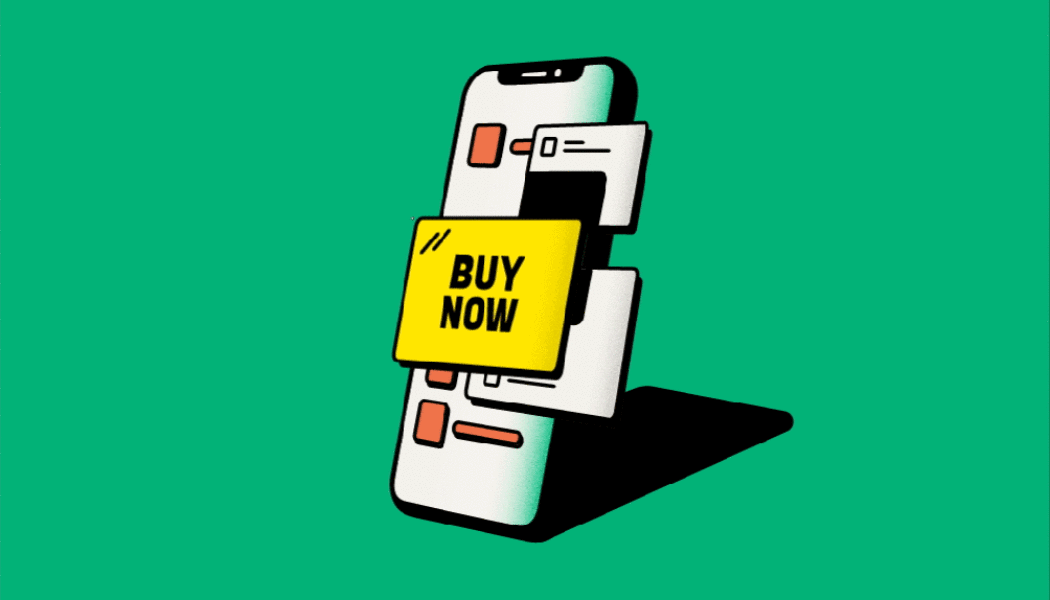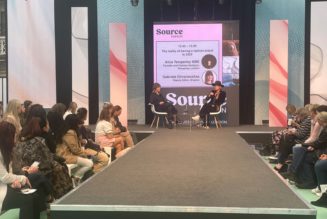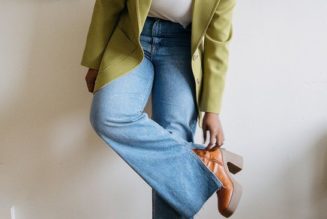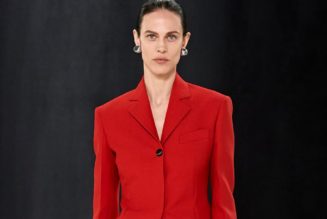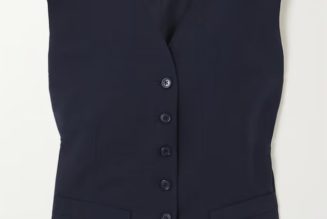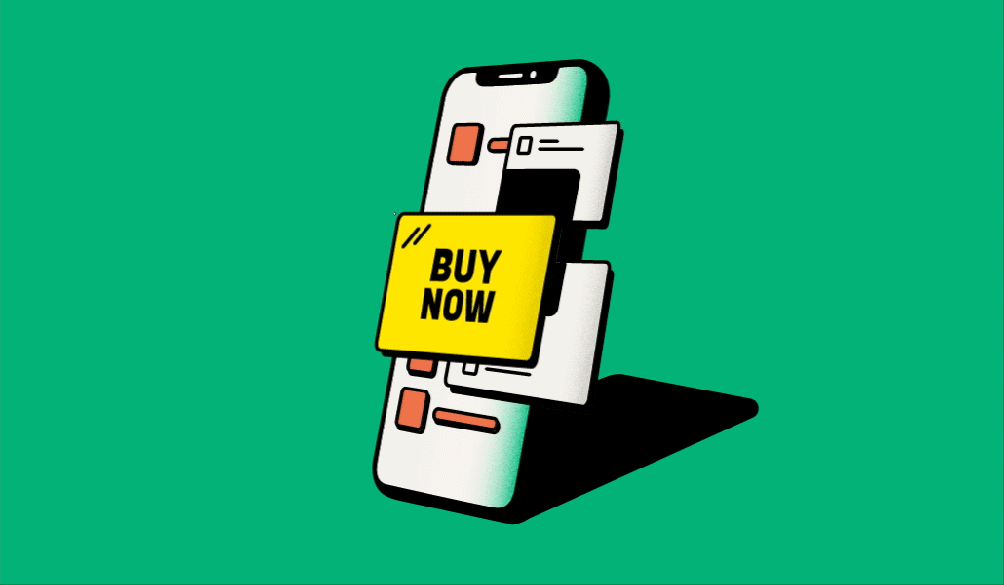
Food, drinks, beauty products: Tens of thousands of workers in today’s gig economy shuttle these goods from stores to doorsteps in the United States. Now, one startup is trying to do the same with high-end jeans and designer shoes.
Ole, which is pronounced “oh-lay,” promises to deliver luxury fashion to shoppers on its app within 50 minutes. The startup works with boutiques and retailers to do so by linking to their point-of-sale systems and then deploying bike messengers (the majority of whom are women, according to the company) to move the product. The couriers wait 15 minutes for customers to try on items, then bring back any apparel or footwear they do not want to buy. Customers pay a $5 delivery fee to use Ole, and the service makes a 25% commission on sales.
While Ole launched in Tel Aviv in 2022 and New York City in 2023, it discontinued its business in Israel in early summer 2023 to solely focus on the U.S. market, co-founder and chief marketing officer Gal Aharon told Modern Retail. Today, the app is quickly-growing; Ole signed up seven of 15 partners in New York City in the last month, Aharon said. Ole’s business has a 40% customer retention rate, with an average order value of $400 to $450.
With a fresh round of funding totaling $1.5 million, Ole has plans to work with larger luxury players, launch a styling concierge service and expand to Miami in the next few months. Still, the company may have challenges ahead, given that some brands may be more inclined to sell through their own apps or websites to keep a greater share of profits.
Ole’s origins
Aharon and co-founder Alon Hendelman decided to launch Ole after Hendelman’s wife, ordering Uber Eats, pointed out that it was much quicker to order food than fashion. The two entrepreneurs, who had worked together before on the car app Engie, paired up to try and find a solution.
“How can we can order everything on demand like groceries and food, yet fashion, if you order it from the boutique around the corner, still takes three to five days [to arrive]?” Aharon said. “It just doesn’t make sense… There’s a huge gap there.”
Aharon likens Ole to a fitting room in which people can try things on in multiple colors and multiple sizes, on their own terms and in whatever location is best for them. For shoppers, “it’s really a worry-free experience,” she said. “You’re actually getting what you want, when you want it.” Retail partners benefit, too, she said, because they are able to speed up the returns process and replenish their stock more quickly.
In addition, Ole is more eco-friendly because it uses bikes instead of delivery trucks, Aharon said. And, because of Ole’s average order size, its bike couriers get a larger commission than they might from a food delivery service, she added. In addition to ferrying the goods, bike couriers are often asked to give their opinions on items customers are trying on. “A lot of them are into fashion, and it’s a very good space to work in,” Aharon said.
Bringing partners on board
In New York City, Ole’s app includes partners such as Edit New York, Atelier and Simkhai. Some sell their own products, and some sell brands like Alexander Wang, Bottega Veneta and Ulla Johnson.
Luxury brand Retrofête began selling items on Ole in January 2023, director of e-commerce Maddie Katz told Modern Retail via email. The brand’s co-founders had an existing relationship with Hendelman’s cousin Omer (Ole’s chief operating officer and also part of the founding team) and were eager to try out the app. “We have had a very positive experience with Ole so far,” Katz said. While Retrofête declined to disclose how many sales it makes from Ole, “we continue to receive favorable feedback,” Katz said.
Today, Ole is focused on adding big designer brands, Aharon said. “Up until now, it was a lot of boutiques and stores,” she said. “Now, the idea is to get a more variety of brands, well-known luxury brands, on board as well.”
However, it can be a challenge for newer marketplaces to get retailers onto their platforms, Andrew Lipsman, an independent e-commerce analyst, told Modern Retail. “A lot of retailers won’t do that or make that investment until they see the volume is there,” he said. “So there is a chicken-and-egg problem, potentially.”
Melissa Minkow, director of retail strategy at digital consultancy CI&T, said she could see Ole “being very useful for people’s events and occasions.” “This is definitely a Neiman Marcus consumer who would want high-end service and is probably needing this for a very ritzy occasion, and if they’re in a pinch,” she said.
To that end, Minkow said, one way to cater to those customers could be by adding extra services, like an in-house stylist for each neighborhood who brings additional colors or sizes of garments, depending on a user’s past purchases. Indeed, Ole plans to use its new funding to send personalized recommendations to shoppers based on their habits and preferences. It also will launch a live styling chat so users can contact customer service representatives.
The quick-delivery landscape
Other startups have tried ultra-fast delivery to varying degrees of success. In 2018, Walmart launched Jetblack, a chat-based personal shopping service in New York City that promised same or next-day delivery with free returns. Walmart discontinued the service in 2020 after catering to fewer than a thousand customers the year before, per the Wall Street Journal.
On the other hand, FastAF, a delivery service for premium brands like Olaplex, is still active after launching in the U.S. in 2020. Need It For Tonight, a British delivery app, officially launched in November in London. It promises “90-minute real-time tracked delivery” from brands such as Skims and Gucci.
Jason Goldberg, chief commerce strategy officer at Publicis Groupe, told Modern Retail that he has “no doubt” that there is a legitimate use case for people desiring a couture garment in under an hour. However, he said, “I’m concerned that that niche isn’t big enough to sustain a standalone business.” With Jetblack, he said, “they couldn’t acquire enough customers, and they had a $500 billion company behind them. So as a startup with a small amount of venture capital, it’s a really hard ask.”
More food delivery startups have ventured into retail to try and capture demand for last-minute items. Many now offer white-label delivery services to retailers, as well as delivery of non-food items. For example, Uber Eats now works with partners including Party City, The Body Shop and PetSmart.
Uber Eats is a large business, with delivery accounting for a little more than 30% of Uber’s revenue in the third quarter. Uber One, a membership program incorporating Uber Eats and Uber’s ride business, had 12 million users by the end of 2022. Yet, Aharon said that Ole’s at-home service is a big differentiator between Ole and, say, Uber Eats.
“They might be able to bring you a bag from point A to point B, but [for Ole] the whole service around it is what makes the secret sauce,” she said. In October, Uber launched a product delivery service called “return a package” that lets Uber users use couriers to send a maximum of five items to their nearest post office, UPS or FedEx.
Looking forward, Ole’s Aharon is confident that more customers and retailers will start using the app. Black Friday, for instance, was a huge success, she said, especially given that Ole reflects the same deals and discounts that retailers have on their websites.
While Ole did not share revenue numbers, Aharon confirmed that the app saw more sales on the app during Cyber Weekend than previous weekends. In addition, she said, many of Ole’s stores in New York City have stores in Los Angeles or Miami, which could help with expansion efforts.
